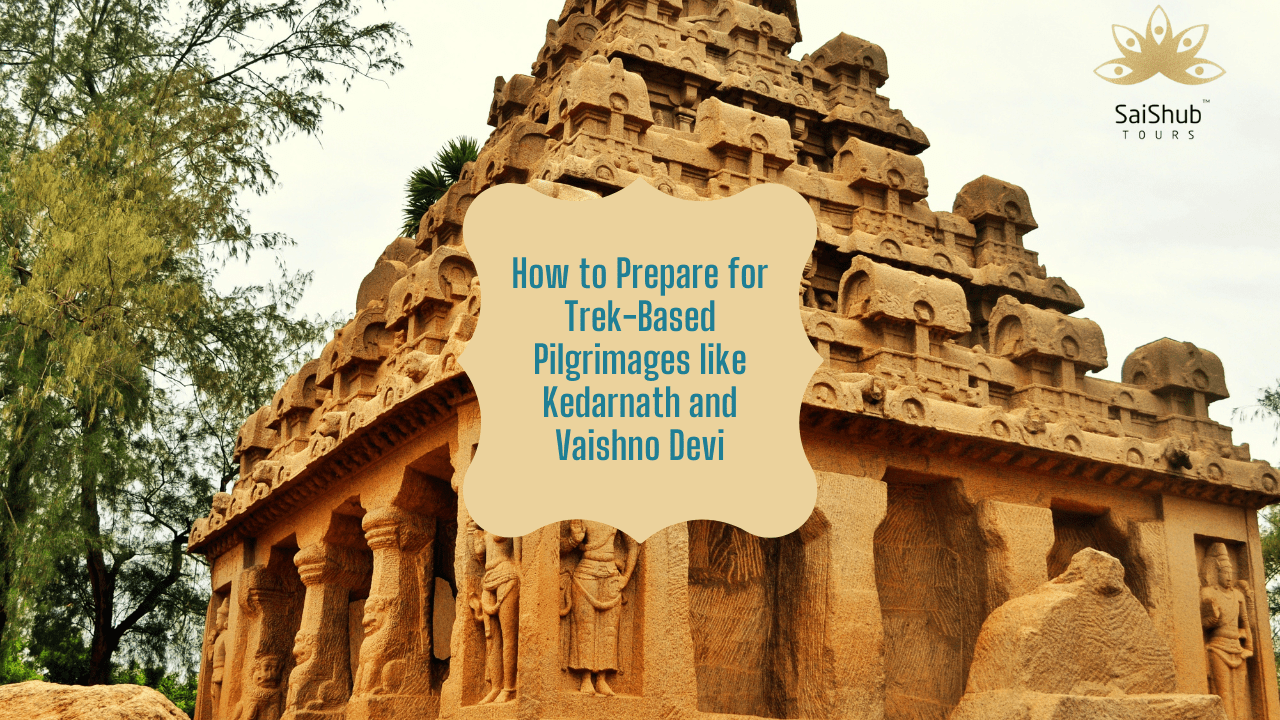
Trek-based pilgrimages such as Kedarnath in Uttarakhand and Vaishno Devi in Jammu & Kashmir are among India’s most spiritually significant journeys. They are not only a test of devotion but also of endurance. Unlike conventional temple visits, these pilgrimages require trekking for several kilometres through varying altitudes and weather conditions.
Whether you are a first-timer or a seasoned traveller, thorough preparation can make your experience smoother, safer, and more fulfilling. Here’s a complete guide to get you ready.
1. Understand the Trek Difficulty and Distance
Before you plan, know the trek length and conditions:
Kedarnath: Approximately 16 km from Gaurikund to the temple, with steep inclines.
Vaishno Devi: Around 12–14 km from Katra to the Bhawan, with paved paths but significant uphill walking.
The difficulty depends on your fitness level, so start training well in advance.
2. Build Physical Stamina
At least 4–6 weeks before the trip, begin light cardio exercises:
Walking/Jogging: Practice walking 5–8 km daily to build endurance.
Leg Strengthening: Squats, lunges, and stair climbing help prepare for uphill walks.
Breathing Exercises: Yoga and pranayama can improve lung capacity, essential for high-altitude treks like Kedarnath.
3. Choose the Right Time to Visit
Weather plays a huge role in your trek comfort:
Kedarnath: Best between May–June and September–October (avoid monsoons due to landslides).
Vaishno Devi: Open year-round, but March–October offers pleasant conditions.
Avoid extreme winter unless you are fully equipped for snow treks.
4. Pack Smart – Essentials for the Trek
A light but efficient packing list is key:
Footwear: Sturdy trekking shoes with good grip.
Clothing: Layered clothing to adapt to changing temperatures; waterproof jackets during rains.
Backpack: Small and lightweight with essentials like snacks, water bottle, rain cover, and torch.
First Aid Kit: Include pain relief sprays, bandages, and altitude sickness tablets.
Trekking Poles: Optional but helpful for balance on steep stretches.
5. Stay Hydrated and Eat Right
Water: Carry a refillable bottle; dehydration can hit faster at higher altitudes.
Snacks: Energy bars, dry fruits, and chocolates can keep your stamina up.
Avoid heavy meals just before or during trekking; opt for light, frequent meals instead.
6. Acclimatise if Needed
For high-altitude treks like Kedarnath, spend a day or two at a nearby base point (e.g., Guptkashi) to let your body adjust to the thinner air. This reduces the risk of altitude sickness.
7. Book Accommodation and Travel in Advance
These pilgrimages attract millions of visitors each year. Secure your accommodation in Gaurikund (for Kedarnath) or Katra (for Vaishno Devi) well before your travel date. Consider helicopter services for Kedarnath if you have health concerns or time constraints.
8. Respect the Environment and Local Customs
Avoid littering—carry your waste back.
Follow temple dress codes.
Refrain from loud behaviour; these are sacred spaces.
Support local vendors and small businesses.
9. Mental Preparation
Long treks can be physically tiring, but the journey is as spiritual as the destination. Keep a positive mindset, pace yourself, and focus on the experience rather than just the finish line.
Final Thoughts
Trek-based pilgrimages like Kedarnath and Vaishno Devi offer a rare combination of physical challenge and spiritual fulfilment. With the right preparation, you can ensure a safe, comfortable, and deeply rewarding journey. Remember: the trek is not just about reaching the temple—it’s about every step that brings you closer to faith and self-discovery.
FAQ
The best time for Kedarnath is from May to June and September to October, avoiding monsoon season due to landslides. For Vaishno Devi, October to March offers pleasant weather and fewer crowds.
While both treks are manageable for most people, a basic level of fitness is required. Start with daily walking, stair climbing, and light cardio a few weeks before your trip to build stamina.
Essential items include comfortable trekking shoes, warm clothing (especially for Kedarnath), a raincoat, water bottle, energy snacks, personal medication, and a walking stick for support.
Yes, both Kedarnath and Vaishno Devi routes have ponies, palanquins, and even helicopter options for those unable to walk the entire distance.
Yes, but it is advisable to assess their health conditions first. For children and elderly travelers, opt for shorter walking intervals, rest breaks, or alternative transport like ponies or helicopters when available.
Conclusion
Trek-based pilgrimages like Kedarnath and Vaishno Devi offer a rare combination of physical challenge and spiritual fulfilment. With the right preparation, you can ensure a safe, comfortable, and deeply rewarding journey. Remember: the trek is not just about reaching the temple—it’s about every step that brings you closer to faith and self-discovery.

